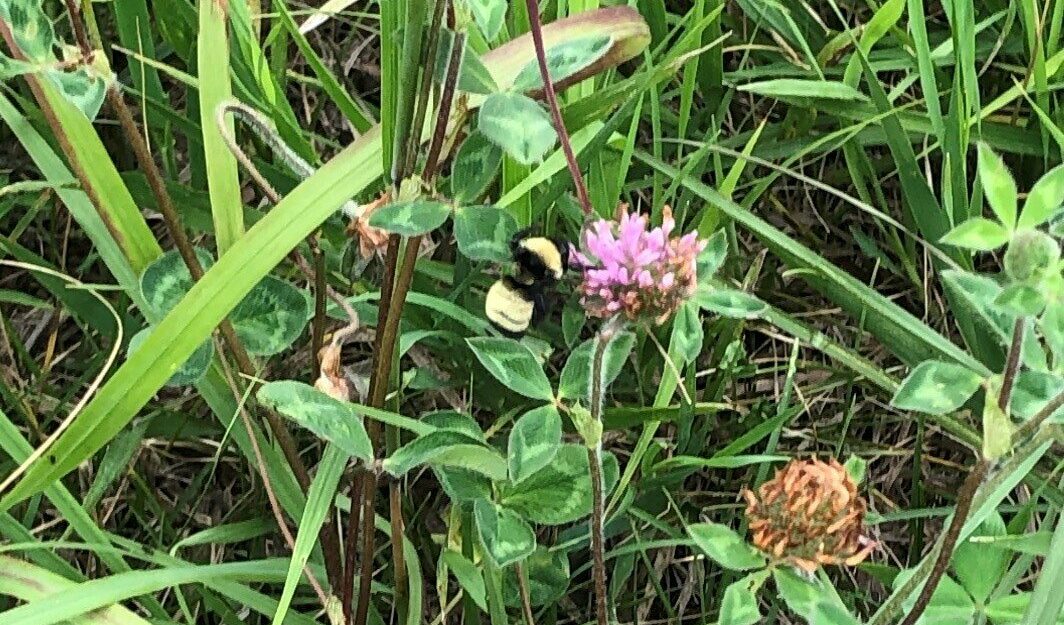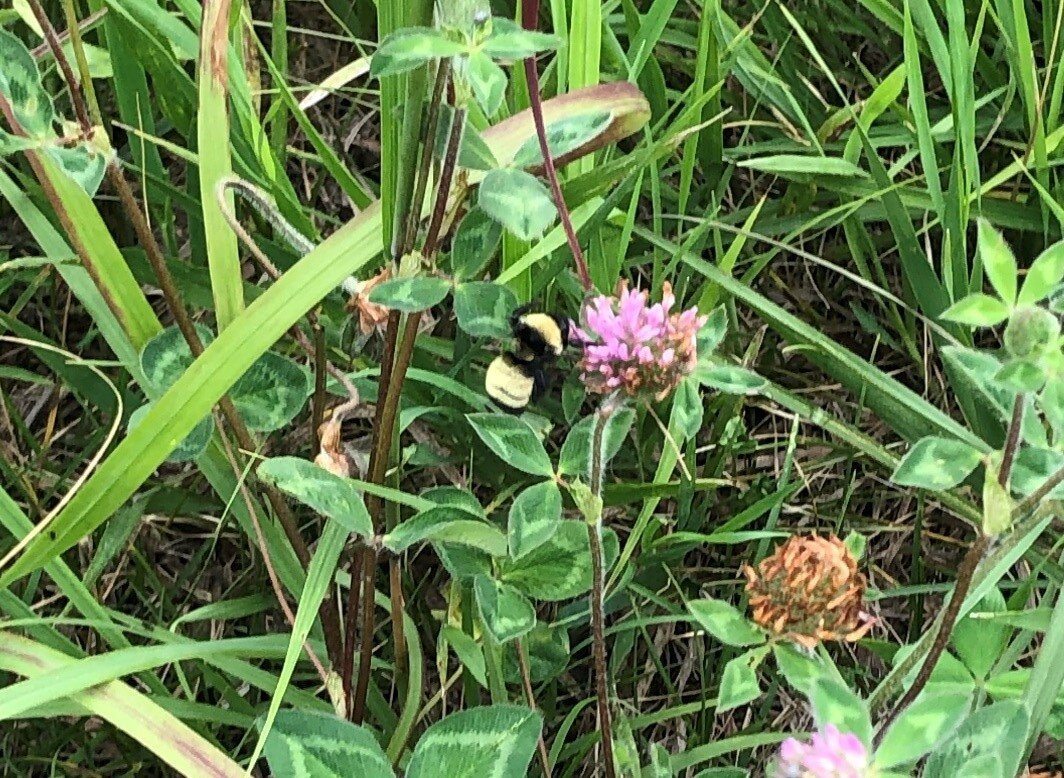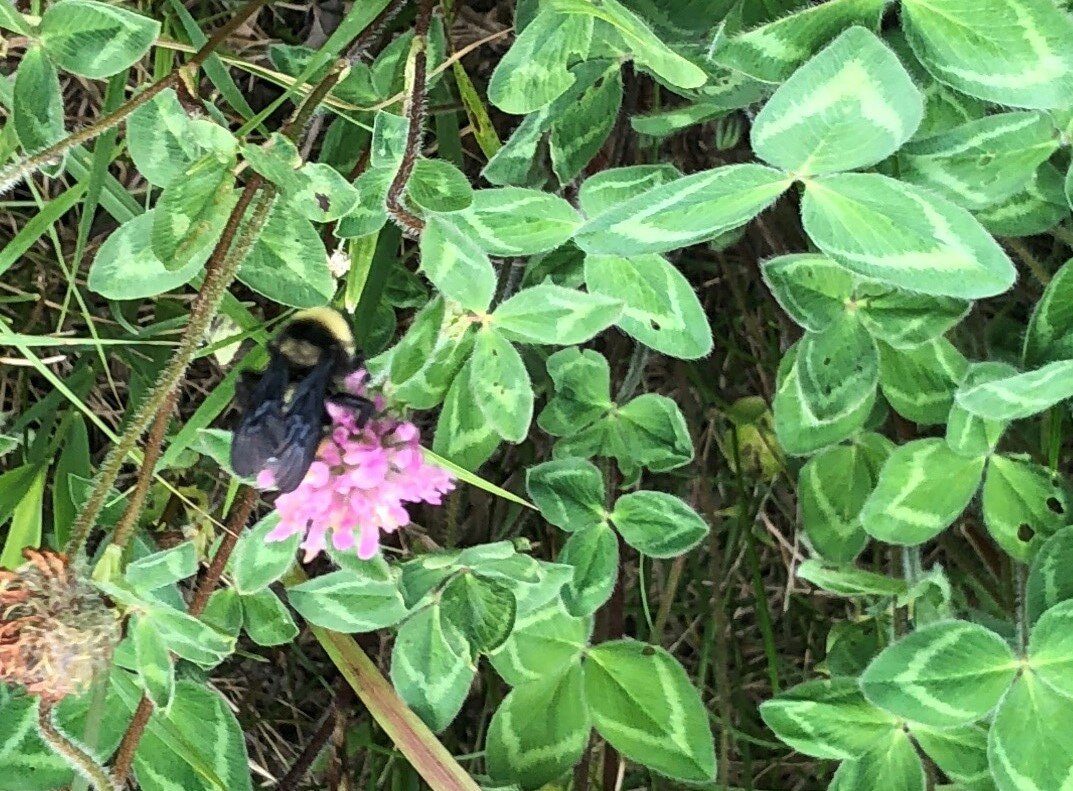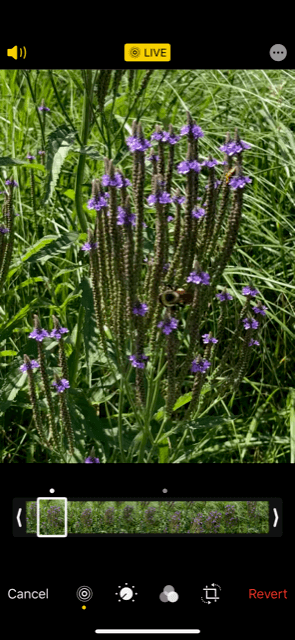The Bees Knees

by Ashley Broussard, Agriculture and Water Outreach AmeriCorps Member with the Minnesota Department of Agriculture through Conservation Corps’ Individual Placement program
Did you know, pollinators play an essential role for food production? According to the USDA, more than 1/3 of crops rely on insect pollination. Unfortunately, the number of pollinators across the country are dwindling. Cottonwood Soil and Water Conservation District is on a mission to improve pollinator habitat in hopes of increasing their population size locally. As a result, our office has been tasked with photographing bees when we are in the field to help keep track of what pollinators reside in our county. Our office has encouraged the public to email photos to our office as well.
Photographing bees, I found, can be surprisingly difficult but I have developed a few tricks along the way.
Tip 1: Portrait Mode
When a bee is sitting on a plant portrait mode is, in my opinion, the best way to take the photo. This setting zooms in and focuses on the bee which allows you to see more detailed features of their body. This comes in handy when it is time to identify what species the bee may be. The zoom also allows you to keep a farther distance than the default setting which helps prevent disturbing the bee.


Tip 2: Live Photo
In an ideal situation, the bee will be at rest or feeding which allows for an easy and quick photograph. However, more often than not the bee will be quickly buzzing from one plant to the next. In this situation, a video or a live photo is the best way to capture this bee. From a live photo, you could pick and choose a thumbnail from 3 seconds of video.


Above: Initial Key Photo Vs Changed Key Photo
Tip 3: Video
If your phone doesn’t have the ability to take a live photo, you can take a video. As you watch the video, take screenshots when you see a clear image of the bee. These screenshots may be a bit blurry, but can be easier to get a shot when you can’t keep up with the bee’s pace.
If you’d like to help track what bees reside in your county, submit your bee pictures to Bumble Bee Watch. The website has a step-by-step identification chart and your photo will be reviewed by an expert to verify your finding.